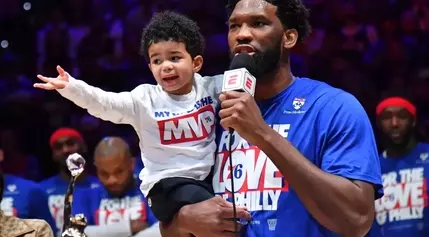The NBA's decision to suspend Philadelphia 76ers star Joel Embiid for three games following a physical altercation with a reporter has ignited a broader discussion about the delicate balance between players and the media. The incident, which occurred after a recent game, has raised questions about the boundaries of acceptable behavior and the importance of mutual respect in their professional relationship.Navigating the Thin Line Between Passion and Professionalism
The Incident and Its Aftermath
The incident in question took place on Saturday night, following the Sixers' home loss to the Grizzlies. Embiid, who had missed five games to start the season due to a knee injury, took issue with a critical column written by Philadelphia Inquirer columnist Marcus Hayes. The column had referenced Embiid's son and late brother, both named Arthur, in the context of questioning the star's conditioning.Embiid confronted Hayes in the locker room, warning him that if he mentioned his family members again, there would be consequences. When Hayes attempted to apologize, Embiid rebuffed him, stating, "that's not the f--king first time." The 2022-23 MVP then pushed Hayes' shoulder before a member of the 76ers' PR team intervened to separate the two.
The League's Response and the Importance of Mutual Respect
The NBA swiftly responded to the incident, suspending Embiid for three games. In a statement, the league's Head of Basketball Operations, Joe Dumars, emphasized the paramount importance of mutual respect in the relationship between players and the media. Dumars acknowledged that while Embiid was offended by the personal nature of the original column, interactions must remain professional on both sides and cannot turn physical.This suspension highlights the delicate balance that players and the media must strike in their interactions. While athletes are often passionate about their craft and may take issue with critical coverage, the league expects them to maintain a level of professionalism and restraint. Crossing the line into physical altercations, even in the heat of the moment, can have serious consequences.
The Broader Implications: Navigating the Player-Media Dynamic
The Embiid incident has sparked a broader discussion about the complex dynamics between players and the media. On one hand, athletes are often under immense scrutiny and pressure, with their every move and performance analyzed and critiqued. This can understandably lead to heightened emotions and a desire to defend one's reputation or personal life.On the other hand, the media plays a crucial role in covering the sport, providing insights, analysis, and storytelling that captivate fans and drive the broader conversation around the game. While reporters must exercise sensitivity and professionalism in their coverage, players must also recognize the media's important function and the need for open and constructive dialogue.
Finding the Balance: Strategies for Improved Player-Media Interactions
To navigate this delicate balance, both players and the media can adopt strategies to foster a more constructive and respectful relationship. For players, this may involve developing a thicker skin, learning to separate personal attacks from legitimate criticism, and finding constructive ways to address concerns or grievances. The media, on the other hand, can strive for greater empathy, nuance, and a deeper understanding of the challenges faced by athletes.Ultimately, the goal should be to create an environment where players and the media can engage in a productive exchange of ideas, with mutual respect and a shared commitment to the sport and its fans. By finding this balance, the NBA can continue to thrive as a platform for world-class athletic competition and captivating storytelling.

